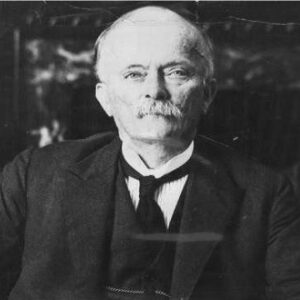John Bradfield was an Australian engineer who was in charge of the design and construction of the ‘Sydney Harbour Bridge.’ He was a hard worker with a lot of talent, as well as the family’s youngest member. Throughout his high school and college years, he acquired numerous medals and honors. He has the skills and knowledge to build wonders in the realm of construction. Throughout his life, he worked as an engineer, dedicating himself to the construction of bridges and underground railway systems in Australia. The government admired his concepts and schemes, and he spent more than four decades of his life working for them. The design of the ‘Sydney Harbour Bridge’ is his biggest and most well-known achievement. He also designed the City Circle, a modern-day subterranean railway system in Sydney’s core business district. He was a master of his craft, a civil engineering genius whose designs were massive and futuristic. He was able to produce visually spectacular masterpieces. His capacity to translate imagination into a real-world thing and a symbol of greatness garnered him people’s esteem.
Childhood and Adolescence
He was born in Sandgate, Queensland, Australia, on December 26, 1867, to Crimean War veteran John Edward Bradfield and his wife Maria Crew. He has a large family.
He attended North Ipswich State School and Ipswich Grammar School in Queensland on a scholarship.
When he completed the Sydney senior public examination in 1885, he received a gold medal in chemistry. He matriculated at the University of Sydney in 1886.
He received a ‘Bachelor of Engineering’ degree from St. Andrew’s College in 1889, along with the University gold medal.
Career of John Bradfield
He began his career as a draftsman for the Queensland Railways Department, where he worked from 1889 until 1891. He was hired as a temporary draftsman in the New South Wales Department of Public Works in 1891, after his marriage, and became a regular draftsman in 1895.
He graduated from the University of Sydney with a ‘Master of Engineering’ degree and the University Medal in 1896.
In the early 1900s, he served as an assistant engineer on many Cataract Dam and Burrinjuck Dam projects.
He ran for the founding chair of engineering at the University of Queensland in 1910, submitting 22 testimonials from well-known people, but he was unsuccessful.
In 1912, he proposed the construction of a suspension bridge to connect Sydney and North Sydney, as well as a cantilever design. It was accepted, and he was named Chief Engineer for the development of metropolitan railways.
In 1914, he traveled to Europe to research new approaches to metropolitan railway networks. He suggested a major scheme for Sydney’s train in 1915, which included electrification of suburban lines, the construction of a city underground railway, and the construction of the Sydney Harbour Bridge. The majority of his proposals were well received, but they were all put on hold as a result of World War I.
He tried to establish a civil aviation school to train pilots for overseas service during World War I.
The Sydney Harbour Bridge Bill was voted into law in 1922, and work on the bridge began in 1923, along with his projected scheme for an underground train system. In 1923, work on constructing a tunnel as part of the underground railway network began.
For his thesis titled “The city and suburban electric railroads and the Sydney Harbour Bridge,” he received the first doctorate of science in engineering from the University of Sydney in 1924.
The railway commissioners forced him to resign in 1930, but the cabinet kept his status, and he continued to work as a government employee, supervising the construction of the bridge, which opened in 1932.
After 42 years of employment with the New South Wales Department of Public Works, he retired in July 1933.
In 1934, he was hired as a consultant engineer for the Story Bridge project, which spans the Brisbane River. The bridge’s construction began in 1935 and was completed in 1940.
Major Projects of John Bradfield
In 1895, he was a founding member of the ‘Sydney University Engineering Society,’ and served as its President in 1902–1903 and 1919–1920.
Two subterranean train stations, St. James and Museum, were inaugurated on December 20, 1926, marking the first success of his intended system for the city, which was followed by further stations in succeeding years.
The inauguration of the ‘Sydney Harbour Bridge’ on March 20, 1932 is considered his greatest achievement. Bradfield Highway was the bridge’s principal roadway segment, and it was named for him.
Achievements & Awards
The ‘Institution of Engineers, Australia,’ which he founded in 1919, awarded him the ‘Peter Nicole Russell Memorial Medal’ in 1933.
In 1933, he was made a companion of the ‘Order of St. Michael and St. George.’
The ‘Institution of Civil Engineers’ awarded him the Telford Gold Medal in 1934.
He received the Queensland Institute of Engineers’ Lifetime Achievement Award in 2007.
Personal History and Legacy
On May 28, 1891, he married Edith Jenkins, the daughter of Brisbane’s John Ventris Jenkins. They had six children: Mary, a daughter, and Edward, Anthony, Alan, Stanley, and Keith, five sons.
Keith Noel Everal, his youngest son and an engineer with the Department of Civil Aviation, was in charge of upgrading Sydney’s Alexandra Canal.
He died in Sydney on September 23, 1943, at the age of 75.
Estimated net worth
The estimated net worth of John Bradfield is unknown.


